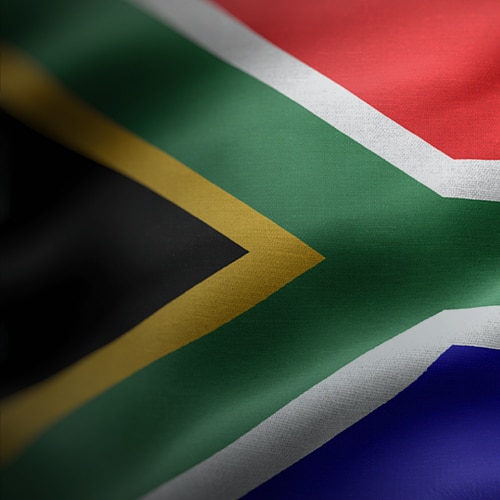Coffee Table Economics (CTE) with Anchor, by Casey Sprake, is distributed periodically. CTE is a compilation of Casey’s research, analysis, and perspectives on key South African (SA) and global economic data such as inflation, spending trends, and international market dynamics, including socio-political events and the multiple factors shaping the world economy.
Executive summary
In this week’s edition, we highlight the following:
- SARB pulls the lever: Dovish rate cut amid easing inflation and a weak growth outlook. The 25-bp cut on 29 May brings the total monetary policy easing to 100 bpts points since the rate-cutting cycle began in September 2024. With inflation subdued, growth under pressure, and real interest rates still restrictive, we believe there is still room for further policy support in the months ahead.
- SA’s growth on thin ice: Agriculture lifts, but headwinds persist. SA’s economy barely stayed afloat in 1Q25, with GDP inching up by just 0.1% QoQ. Growth was highly uneven, with only four of the ten major industries expanding, and agriculture delivering the most significant lift. Overall, SA’s economic outlook has deteriorated, reflecting a combination of domestic political instability and mounting global pressures.
- Business confidence slips again as uncertainty clouds outlook. Business sentiment in SA took another hit in 2Q25. The RMB/BER Business Confidence Index (BCI) fell by five points to 40, following a stall in the recovery that began in early 2024. This means only four out of ten respondents in key sectors are satisfied with current business conditions, highlighting that most remain pessimistic about the economic environment
SARB pulls the lever: Dovish rate cut amid easing inflation and a weak growth outlook
In its latest meeting on 29 May 2025, the South African Reserve Bank’s (SARB) Monetary Policy Committee (MPC) decided to reduce the repo rate by 25 bpts, bringing it down to 7.25%. The prime lending rate now stands at 10.75%. This move, which was largely expected, reflects a dovish shift in the SARB’s stance. The vote in favour of a rate cut was 5–1, with five members supporting the 25-bp cut, while one member argued for a deeper 50-bp reduction. The decision was underpinned by several positive developments both domestically and globally. Lower oil prices, a stronger rand, and a decrease in uncertainty gave the MPC room to ease policy further. This latest cut brings the total reduction to 100 bpts since the current rate-cutting cycle began in 2024. While the easing has been gradual, it has been a much-needed relief for highly indebted consumers. As such, based on current conditions, it is expected to continue to provide support in the months ahead.
However, at the 29 May meeting, the SARB also sharply downgraded its growth outlook due to disappointing data from key sectors. Manufacturing, mining, construction, and wholesale trade have all shown signs of weakness, while retail and vehicle sales also lagged, pointing to a challenging 1Q25. As a result, its 2025 GDP growth forecast has been revised down to 1.2% YoY from 1.7%, aligning more closely with the IMF’s estimate of just 1%. Growth projections for 2026 and 2027 have also been downgraded to 1.5% (from 1.8%) and 1.8% (from 2.0%), respectively. Importantly, the SARB now sees balanced risks to the growth outlook, a shift from its previous view that risks were skewed to the downside. In light of the weaker growth projections, the SARB also reduced its inflation forecasts. Headline inflation is now expected to average 3.2% in 2025 (down from 3.6%), with further reductions for 2026 and 2027, to 4.2% and 4.4%, respectively. These lower projections suggest that inflation is likely to remain below the midpoint of the SARB’s target range throughout the forecast period. Several key factors have contributed to these downward revisions:
- A lower-than-expected starting point for inflation,
- The removal of a proposed VAT hike, which was previously expected to raise inflation by 0.13–0.25 ppts over two years,
- Weaker oil prices, driven by expectations of a global supply surplus, and
- A 4.5% appreciation in the rand exchange rate vs the US dollar YTD, which has helped curb import-related price pressures.
Given this updated inflation trajectory, the SARB might revise its estimate for the neutral repo rate. Previously seen as 7.25%, the Bank’s latest Quarterly Projection Model (QPM) suggests the neutral rate could be closer to 7.0%. The fact that one MPC member advocated for a 50-bp cut, coupled with inflation forecasts staying below the midpoint of the target range, strengthens the case for another 25-bp cut later this year.
A particularly noteworthy development in the May MPC statement was the introduction of a scenario featuring a 3.0% inflation target, signalling the SARB’s growing interest in setting a lower long-term target. This scenario was modelled alongside two “tariff-shock” scenarios related to rising global trade tensions. Under the 3.0% target scenario, headline inflation would average just 3.1% in 2026 and 3.0% in 2027, well below the baseline projections. According to the Bank’s models, adopting this target could allow the repo rate to drop below 6.0% by 2027, assuming inflation expectations adjust smoothly and quickly. However, achieving this shift would depend on several factors, notably whether the Treasury formally adopts a lower inflation target, and if so, how it chooses to implement this change. The SARB acknowledged that lowering the target could come with short-term output costs, though these are expected to be minimal and temporary. A phased approach might be preferred, particularly given the fragile economic growth environment.
Ultimately, while the SARB is clearly leaning toward a lower, more credible inflation target in the face of favourable inflation dynamics, any formal announcement will likely depend on political timing and broader macroeconomic conditions. Nevertheless, the chances of such a move happening during the current administration remain high, even if it is not immediately forthcoming.
The bottom line
The 25-bp cut on 29 May brings the total monetary policy easing to 100 bpts since the rate-cutting cycle began in September 2024. Though the pace has been slower and more staggered than initially anticipated, especially after the last rate hike two years ago, the SARB’s cautious approach has provided significant relief to heavily indebted South African households. With inflation subdued, growth under pressure, and real interest rates still restrictive, we believe that there is still room for further policy support in the months ahead.
SA’s growth on thin ice: Agriculture lifts, but headwinds persist
SA’s economy barely stayed afloat in 1Q25, with GDP inching up by just 0.1% QoQ (seasonally adjusted), following a revised 0.4% increase in 4Q24. Growth was highly uneven – only four of the ten major industries expanded, with agriculture delivering the most significant lift. On the demand side, modest household spending, stronger exports, and inventory drawdowns helped keep the economy just in positive territory. This muted performance reflects a fragile economic backdrop, weighed down by persistent structural challenges, low business confidence, and heightened political uncertainty, particularly regarding concerns around the durability of the Government of National Unity (GNU). Globally, volatile trade conditions and tariff-related risks added to the pressure.
Agriculture stood out with a 15.8% QoQ surge, contributing 0.4 ppts to GDP growth. Horticulture led the gains, supported by favourable rainfall. Without agriculture’s strong showing, GDP would have contracted by 0.3%. Transport and communication also supported growth (+2.4%), along with modest gains in trade and accommodation. Financial and real estate services extended their winning streak, growing for the tenth straight quarter. In contrast, mining and manufacturing dragged growth lower, together subtracting 0.4 ppts. Mining output dropped sharply (-4.1%), weighed down by platinum group metals (PGMs), coal, and gold. Manufacturing was hit by weaker production in chemicals, food, and transport equipment. The electricity, gas, and water sector also declined (-2.6%), primarily due to the return of loadshedding.
On the expenditure side, growth was similarly subdued. Exports improved slightly—likely helped by rand weakness—but were constrained by logistics and global softness. Imports rose by 2.0%, weighing on GDP, as businesses likely front-loaded orders amid tariff concerns. Household consumption edged up 0.4%, but its earlier resilience is waning. Low inflation still supports real incomes, but tighter monetary conditions and the fading effect of pension withdrawals are reducing financial buffers. Discretionary spending has slowed, with consumers focusing more on essentials like food and transport. Investment was notably weak: gross fixed capital formation (GFCF) fell 1.7%, led by a 4.5% decline in private sector spending. Business confidence remains low, stuck at 40, well below neutral, dragging down investment in buildings, machinery, and transport assets.
Overall, SA’s economic outlook has deteriorated, reflecting a combination of domestic political instability and mounting global pressures. The SARB has revised its 2025 GDP growth forecast downward from 1.7% to 1.2% YoY, citing the impact of rising global trade tensions and deepening political uncertainty at home. The IMF, on the other hand, forecasts GDP growth at only 1% for 2025. Investor confidence has been dented by ongoing discord within the GNU, raising concerns over policy direction and the potential delay of critical structural reforms. These tensions, coupled with persistent challenges in the logistics and energy sectors, continue to weigh heavily on business sentiment and long-term investment planning. The outlook for the medium term has also weakened. The SARB has revised its forecasts for 2026 and 2027 to 1.5% and 1.8% YoY, respectively, reflecting limited momentum in reform implementation and ongoing external risks.
One of the key short-term risks is the expiration of the 90-day US tariff reprieve in early July. Should no extension be granted, some SA exports to the US (the country’s second-largest trading partner) could face tariff rates of up to 30% (vs the current 10%). This threatens to erode export competitiveness and suppress trade volumes.
The bottom line
While low inflation is currently providing some relief to households through higher real disposable incomes, this is only partly offsetting broader economic headwinds. Consumers may also benefit from lower debt-servicing costs and potential further withdrawals under the two-pot pension scheme, which could help stabilise domestic demand in the short run. That said, the intense uncertainty that characterised 1Q25, linked to budget delays, tariff shocks, and political fragility, has started to ease, though only slightly. In the long term, sustained structural reform still holds the potential to lift SA’s growth trajectory. However, in the near term, the outlook remains constrained by fragile investment sentiment, political risk, and external shocks, leaving the economy vulnerable to further downside risks.
Business confidence slips again as uncertainty clouds outlook
SA business sentiment took another hit in 2Q25. The RMB/BER BCI fell by five points to 40, following a stall in the recovery that began in early 2024. This means only four out of ten respondents in key sectors are satisfied with current business conditions, highlighting that most remain pessimistic about the economic environment. While still slightly above the average levels recorded in 2023 and 2024, the index has now dipped just below its long-term average. This drop signals a broader loss of momentum in the economy, which was already evident in the meagre 0.1% GDP growth reported for 1Q25. Notably, the second-quarter survey, conducted between 7 and 26 May, captured a period marked by global trade uncertainty, volatile currency movements, and persistent domestic constraints.
Diplomatic tensions between SA and the US lingered throughout the survey window, even as equity markets saw some relief following the temporary pause in US reciprocal trade tariffs announced on “Liberation Day” (2 April). Locally, the rand was highly volatile, briefly weakening past R19.90/US$1 in April before recovering below R18/US$1 during May. Meanwhile, some political nerves settled as fears of a GNU collapse eased modestly. However, not all developments were reassuring. Many survey responses came in before the announcement of Budget 3.0, meaning expectations around fiscal policy were still fluid.
Confidence declined in four of the five sectors surveyed. The only improvement came from wholesale trade, where sentiment rose to 50 from 42. In contrast, building contractors, new vehicle dealers, and retailers all reported sharp declines in confidence, dipping into negative territory. This was despite new domestic vehicle sales showing modest gains on a MoM basis in April and May. Manufacturers also saw sentiment fall further, landing at a subdued 33. The weakness in the manufacturing sector continues to raise concerns. Production shrank by 2.0% QoQ in 1Q25, and early signs from the ABSA Purchasing Managers’ Index (PMI) readings for April and May suggest the sector could face another difficult quarter in 2Q25. Beyond sector-level sentiment, composite indicators painted a similarly downbeat picture. The index measuring overall business activity fell by 13 points to -16 in 2Q25, while employment indicators remained soft. Price pressures also worsened—input costs rose faster than selling prices, squeezing margins. These trends are worrying for private sector investment, especially following the 4.5% contraction in real private sector capital formation reported for 1Q25.
The bottom line
Looking ahead, while the global environment remains fraught with uncertainty (particularly around tariffs and trade), SA’s best hope for restoring business confidence lies in speeding up the implementation of structural reforms. Though progress has been slow, it is critical for unlocking private sector investment and lifting the economy’s long-term growth potential. Still, persistent infrastructure challenges, especially in the logistics and water sectors, continue to weigh on sentiment and investment planning.




